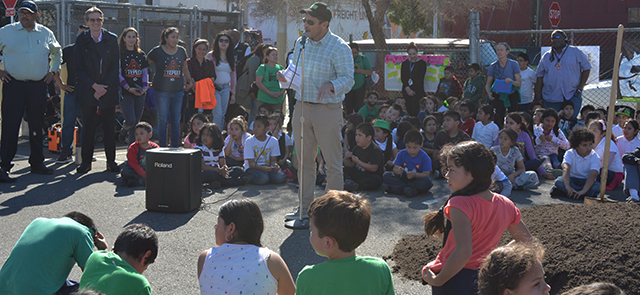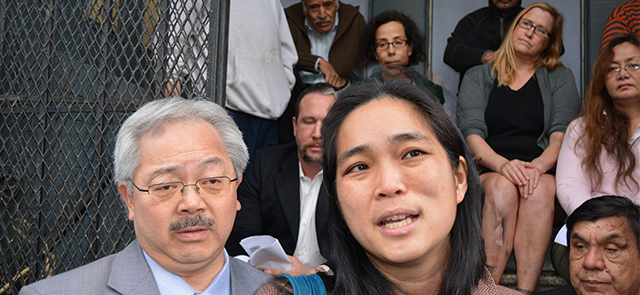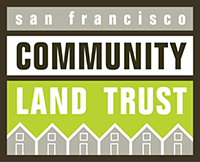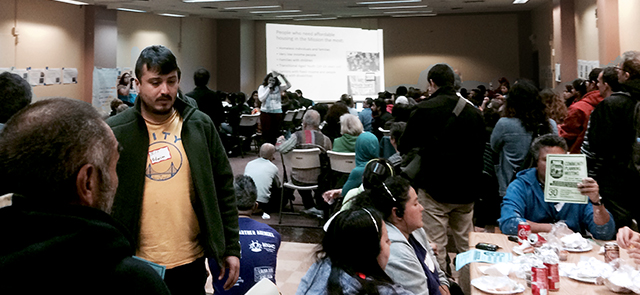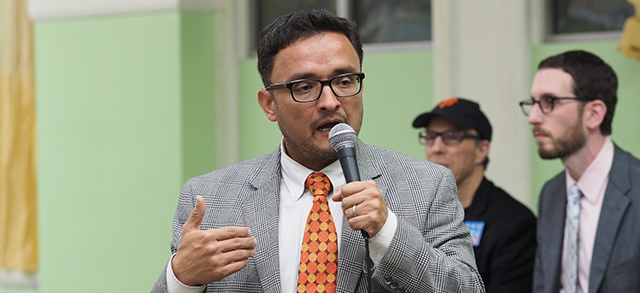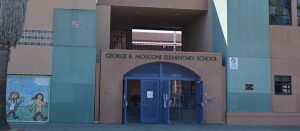 While the Mission Promise Neighborhood education initiative focuses on four schools — Bryant and Chavez elementary, Everett Middle and O’Connell High — the fact is all schools within the Mission footprint are deemed part of MPN. That why families at Moscone Elementary School, located on Harrison between 21st and 22nd streets, receive connections to free community services, too.
While the Mission Promise Neighborhood education initiative focuses on four schools — Bryant and Chavez elementary, Everett Middle and O’Connell High — the fact is all schools within the Mission footprint are deemed part of MPN. That why families at Moscone Elementary School, located on Harrison between 21st and 22nd streets, receive connections to free community services, too.
Being in the Mission, one issue of note for all Mission Promise Neighborhood families is affordable housing in what has become an ever-expensive neighborhood, six-figure earners moving in en masse since the tech boom.
The good news is that five Moscone Elementary families are now in safe, secure and quality housing: These are below-market-rate (BMR) apartments that cost only one-quarter to one-third the monthly rent of market-rate units in the same development. These brand-new properties feature many amenities, from rooftop terraces to on-site fitness centers.
Locating such affordable housing takes perseverance by families, all in search of a better life for their kids, the latter not wanting to leave their school, friends and, often, the only neighborhood they have ever known.
Some families have been living in cramped quarters, either several people in a garage studio or tiny, one-bedroom apartment. In fact, a comprehensive housing survey, taken of over 2,000 tax clients who came to MEDA last season, showcases the issue. (MEDA is the lead agency of the Mission Promise Neighborhood.)
Gauging by how many people per bedroom were denoted in the survey, the findings were that 21 percent of respondents reported living in overcrowded conditions (more than two people per bedroom, per HUD’s definition); however, the rate of overcrowding was more than twice as high among Latinos than non-Latinos.
While each Moscone Elementary family has their own story, they share a commonality of experience, as evidenced by discussions during affordable-housing presentations held Fridays at the school by MEDA’s Community Planning Manager Dairo Romero. He has already spearheaded these sessions seven times, afterward assisting attendees with the BMR application process.
An education is offered on the need to keep applying as a way to better your odds of winning the BMR lottery. Also, Romero explained the process of what would occur after winning the lottery, including paperwork required and the need to have one’s finances in order.
The five families having won lotteries and who have received keys to their brand-new apartments are:
- Heidi Deleon, now at Trinity.
Heidi had been living in a studio apartment with her two children. - Asenaida Escober, now at Five 88 Mission Bay.
A master tenant had asked Asenaida to leave the unit. - Maria Esquite, now at L SEVEN.
Maria’s family experienced a no-fault eviction, so she received the City’s Displaced Tenant Housing Preference (DTHP), which helps the holder’s chances of winning BMR lotteries. - Laura Mejia, now at L SEVEN.
Laura’s family also experienced a no-fault eviction, so she received a DTHP. - Edilma Castañon, now at Waterbend.
Edilma is part of a five-person household that was living in cramped quarters.
The principal at Moscone Elementary is thankful students are now in much-improved housing, plus being connected to other free services available to strengthen families in the Mission.
Romero will continue to offer his presentations, putting forth the important message that “¡Vivienda económica es posible para todos en San Francisco!” (“Affordable Housing is possible for all in San Francisco!”)
____________________________________________________________
About Mission Promise Neighborhood
The Mission Promise Neighborhood is a citywide community partnership that was created to support kids and families living, working and attending school in the Mission District. It brings together schools, colleges, community organizations and community leaders to help kids graduate and families achieve financial stability.

 “For all families, health starts with food on the table and a roof over our heads. It warms our hearts to see the smiles on the faces of these families in their new and secure homes,” says Executive Director Brenda Storey of Mission Neighborhood Health Center (
“For all families, health starts with food on the table and a roof over our heads. It warms our hearts to see the smiles on the faces of these families in their new and secure homes,” says Executive Director Brenda Storey of Mission Neighborhood Health Center (